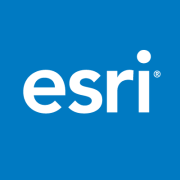Geographic Information Systems, or GIS, offer advanced tools for capturing, storing, analyzing, and displaying spatial and geographic data, empowering organizations with powerful insights for data-driven decision-making.
The top 5 Geographic Information System solutions are ESRI ArcGIS, Mapbox, CartoDB, LandVision and Attentive AI, as ranked by PeerSpot users in March 2025. ESRI ArcGIS received the highest rating of 9.5 among the leaders, is the most popular solution in terms of searches by peers, and holds the largest mind share of 38.1%.
GIS solutions provide users with the ability to conduct spatial analysis, manage geographic data, and facilitate effective collaboration across industries. These systems support a vast array of applications including urban planning, agriculture, environmental management, and transportation. By leveraging GIS, users can visualize and interpret data in ways that reveal relationships, patterns, and trends in geographical contexts.
What are the critical features of Geographic Information Systems?Implementation of GIS varies widely across industries, providing tailored solutions for different needs. In agriculture, GIS supports precision farming by enabling detailed analysis of field data to optimize yield. Urban planning utilizes GIS for infrastructure design and land-use management. Environmental sectors leverage it for conservation efforts, while logistics and transport industries use it for route optimization and fleet management.
Organizations benefit from GIS by gaining a competitive edge through enhanced data analysis capabilities. GIS empowers them to understand complex geographical patterns, improving decision-making processes and fostering innovative solutions in their operational strategies.











Geographic Information Systems provide powerful tools to analyze spatial data, allowing businesses to visualize trends, patterns, and relationships in their data. You can make more informed decisions based on location-based insights, optimize supply chains, identify market opportunities, and improve customer targeting. Integrating GIS with business operations enhances predictive analytics, improving strategic planning and resource allocation.
What are the benefits of using GIS in urban planning?GIS is invaluable in urban planning as it allows for precise mapping and spatial analysis of city environments. You can evaluate land use, transportation networks, and infrastructure efficiently. With GIS, simulate growth scenarios, assess environmental impacts, and improve disaster management. Planners use GIS to enhance transparency with stakeholders by providing a clear visual representation of urban development plans.
How can GIS support environmental conservation efforts?GIS supports environmental conservation by offering tools for mapping and analyzing ecological data. As a professional, this means you can track changes in natural habitats, monitor wildlife, and assess the impact of human activities on ecosystems. GIS allows the creation of detailed environmental impact assessments and aids in resource management, promoting sustainable practices and conservation strategies.
What role does GIS play in emergency management?In emergency management, GIS is critical for disaster preparedness, response, and recovery. You can utilize GIS for real-time data tracking, risk assessment, and resource allocation. It helps in creating detailed evacuation plans and assessing vulnerable areas. GIS technology allows you to visualize potential scenarios, aiding in effective communication and coordination with emergency services and the public.
How is GIS used in agriculture for precision farming?GIS facilitates precision farming by providing detailed spatial data analysis. You can optimize crop yields by analyzing soil conditions, weather patterns, and crop health. GIS supports efficient resource management, such as water and fertilizer use, reducing waste and improving sustainability. With GIS, you can make informed decisions on planting, pest control, and harvesting, enhancing agricultural productivity.